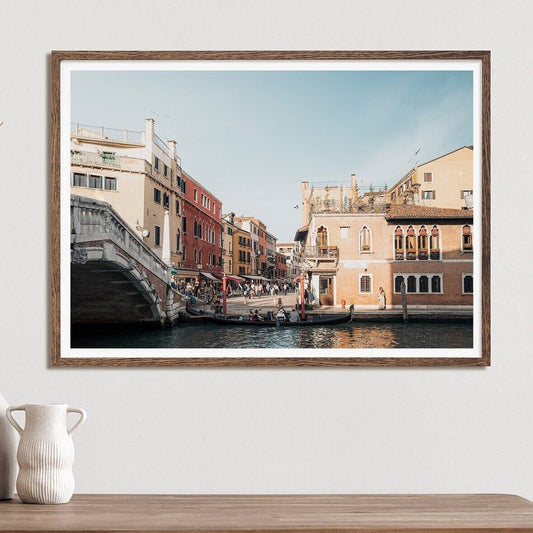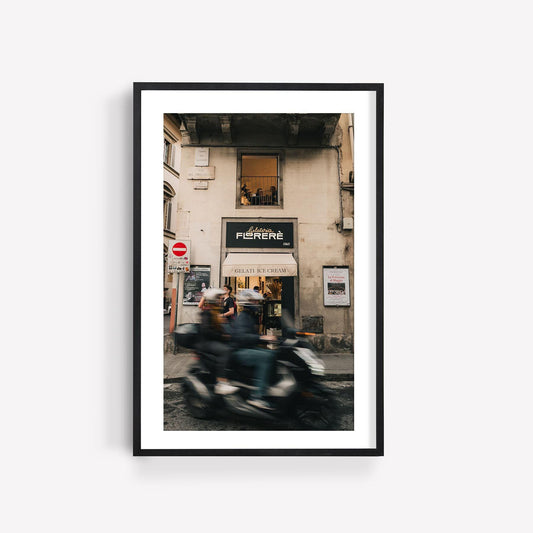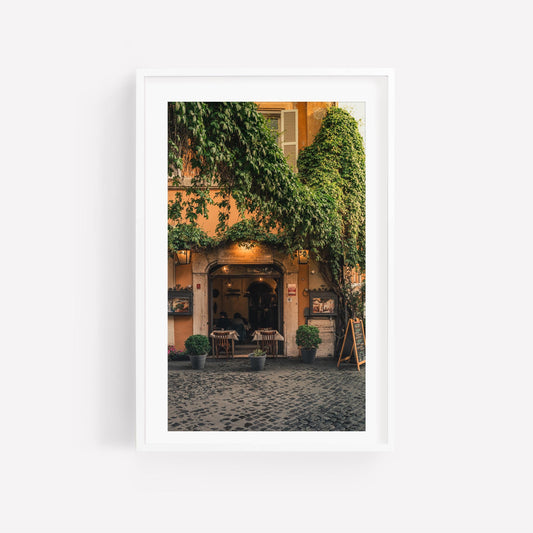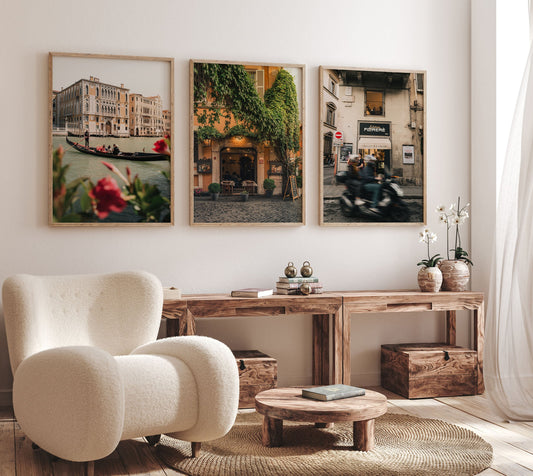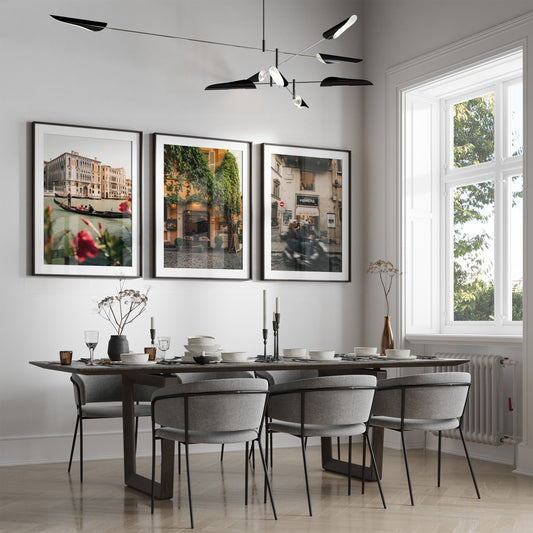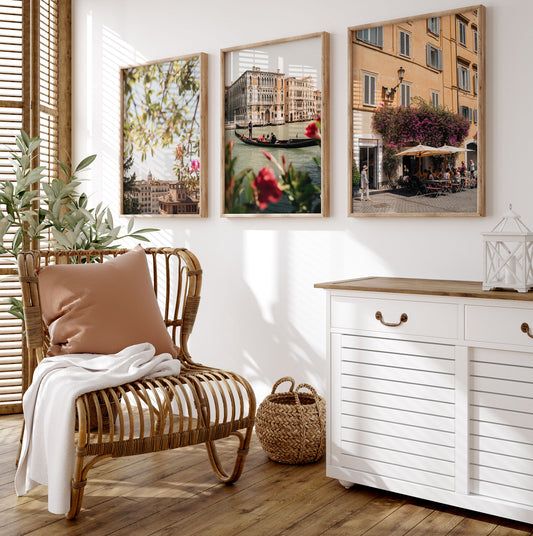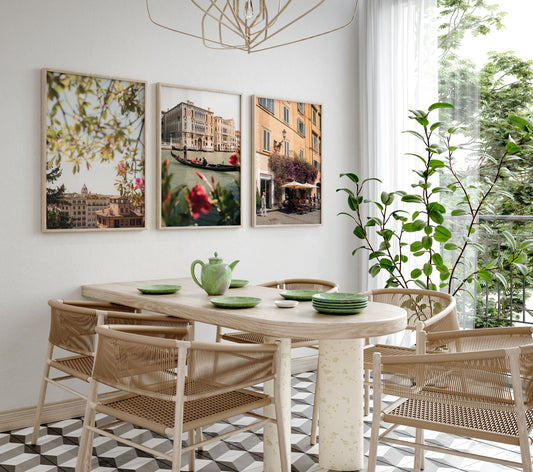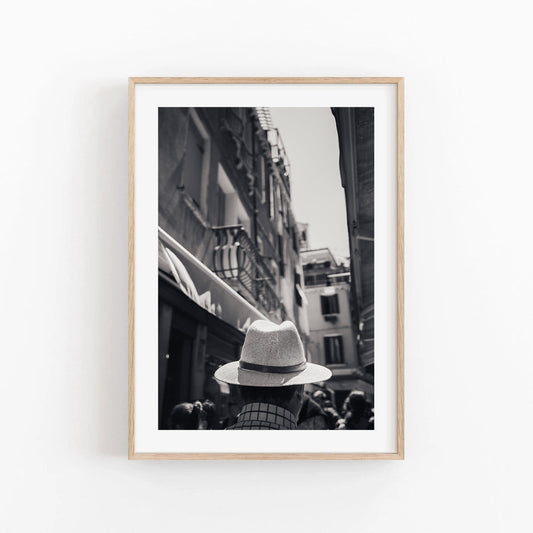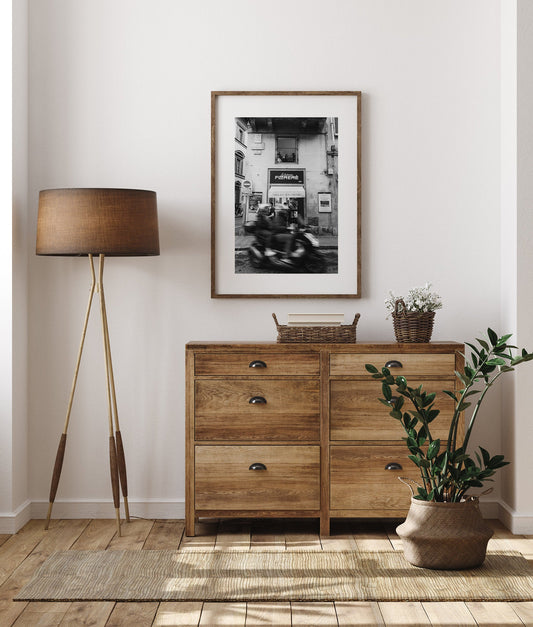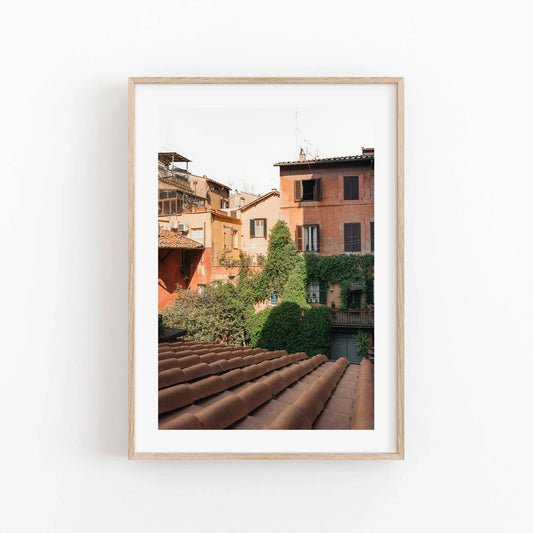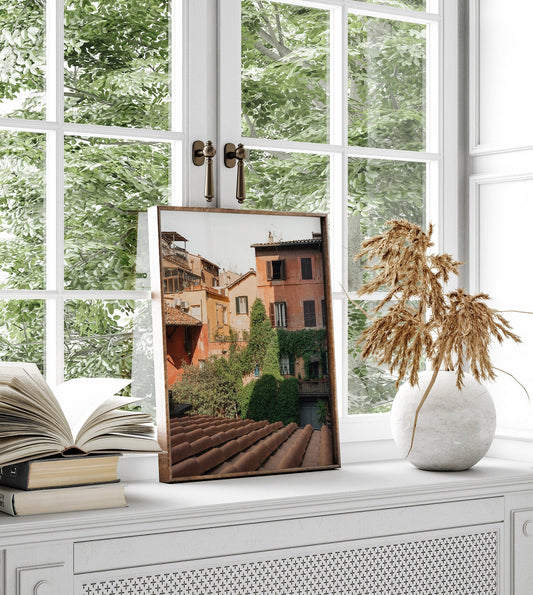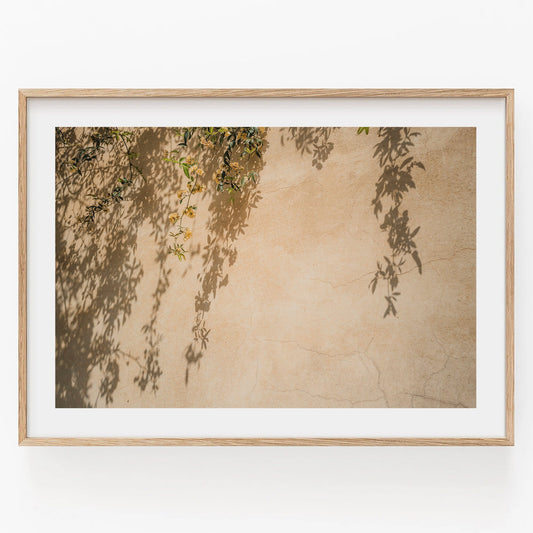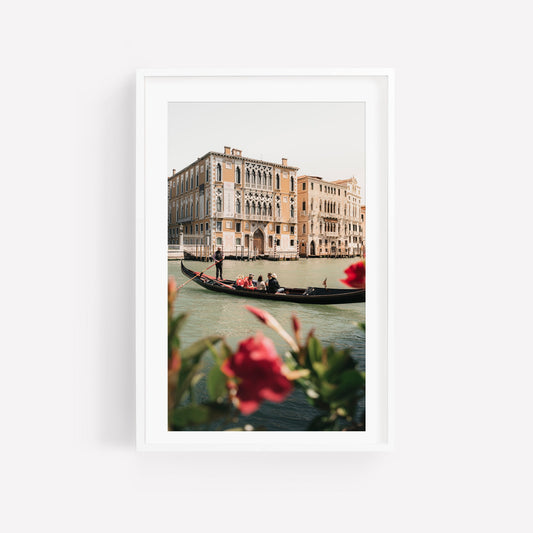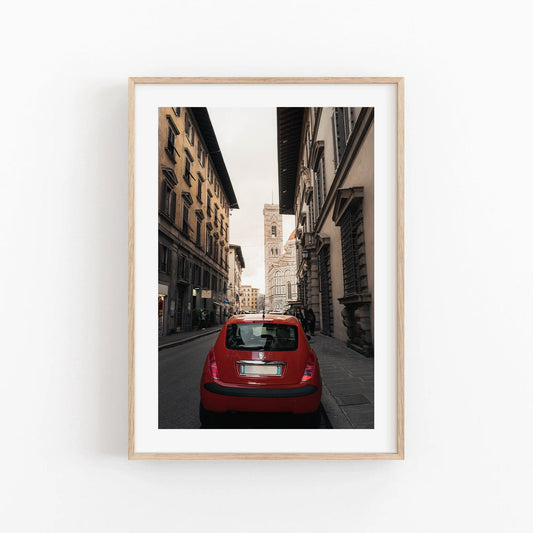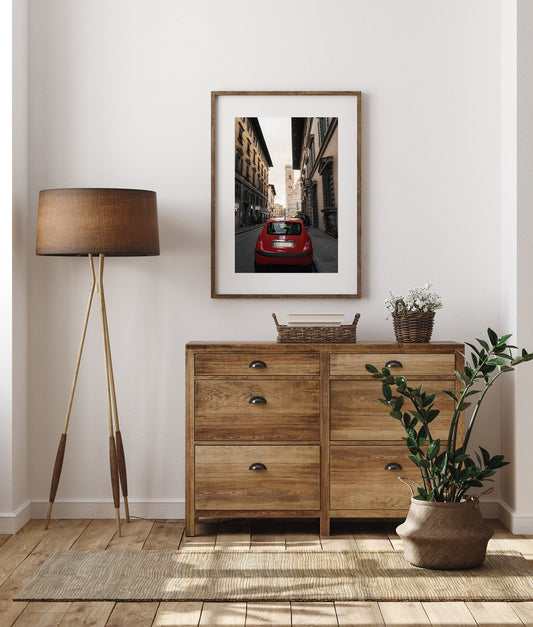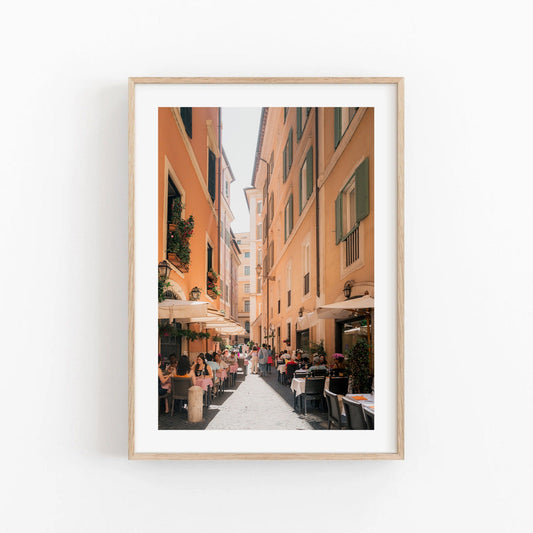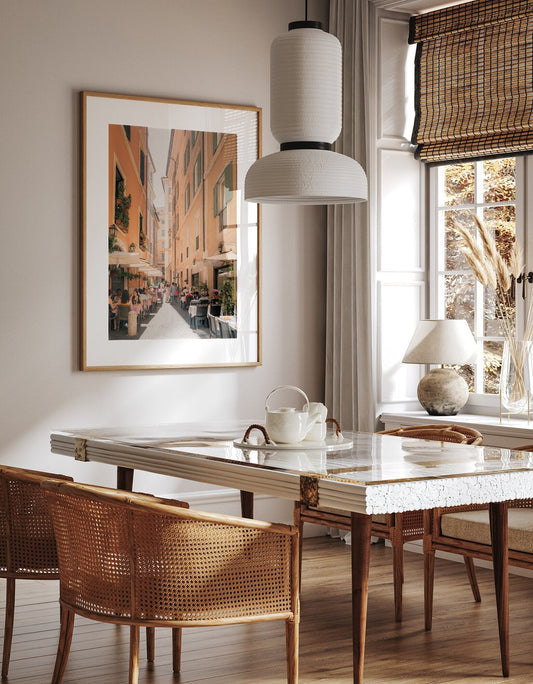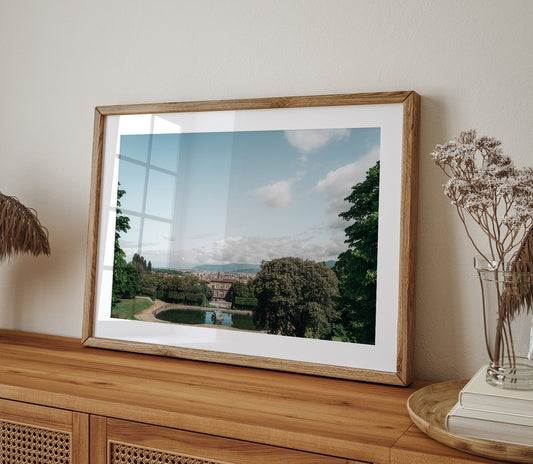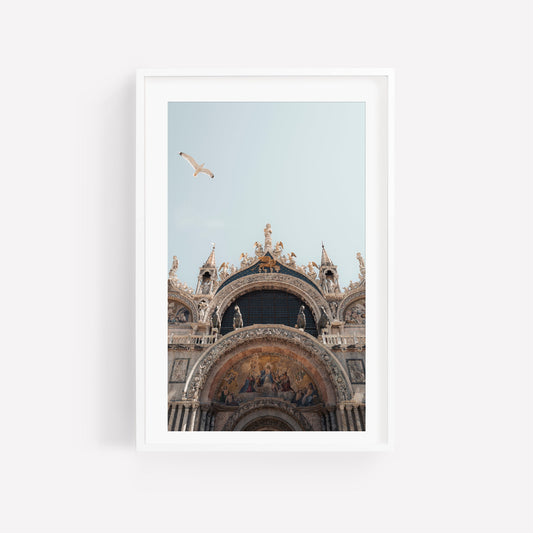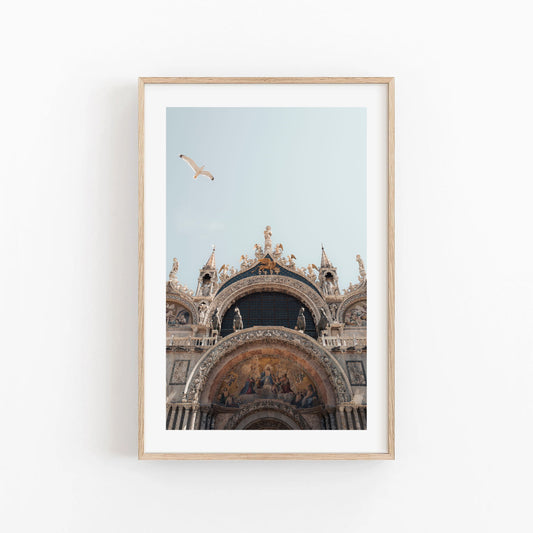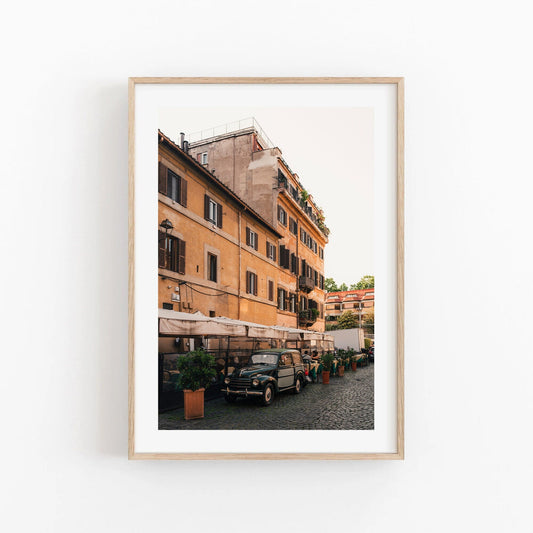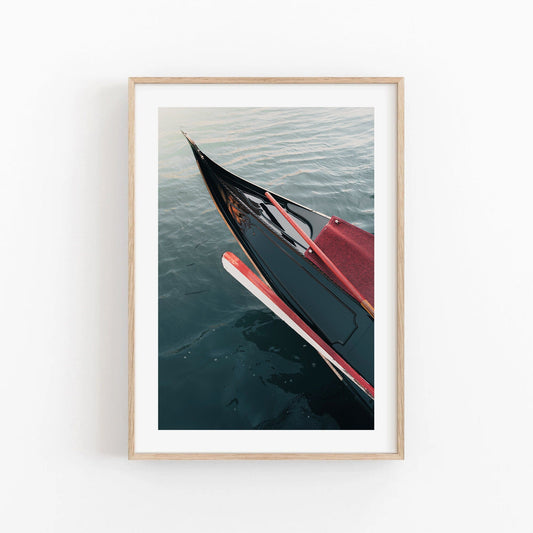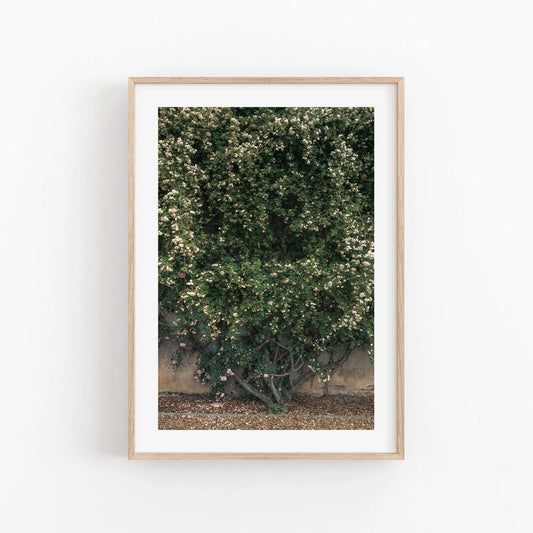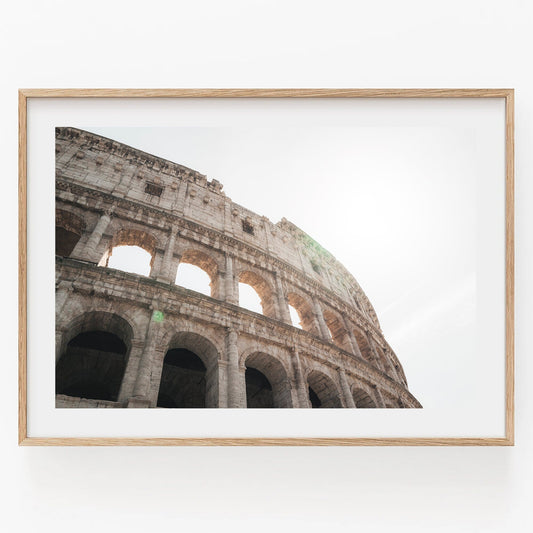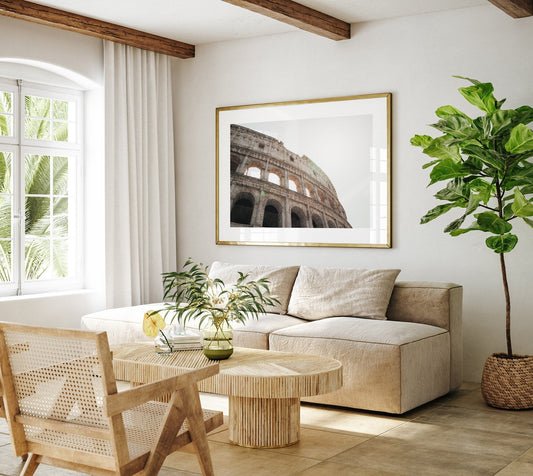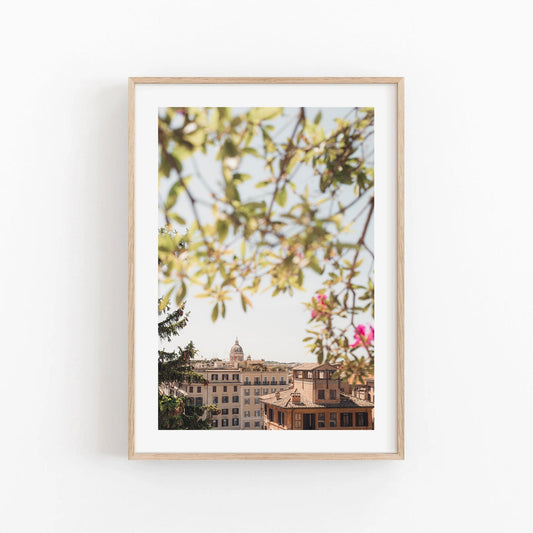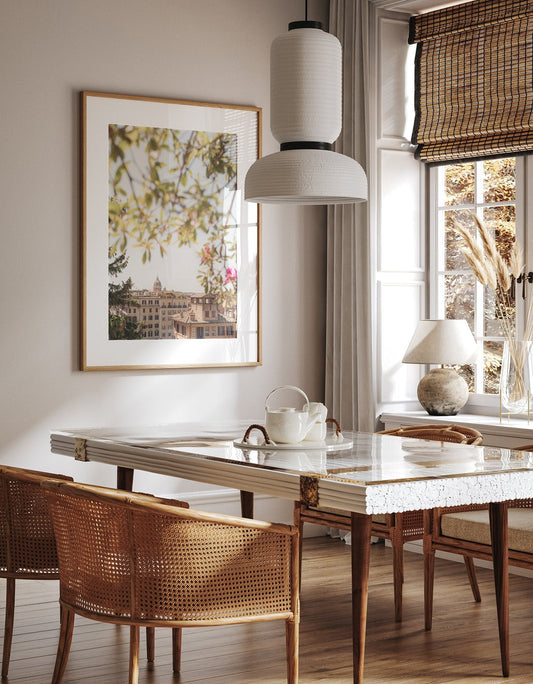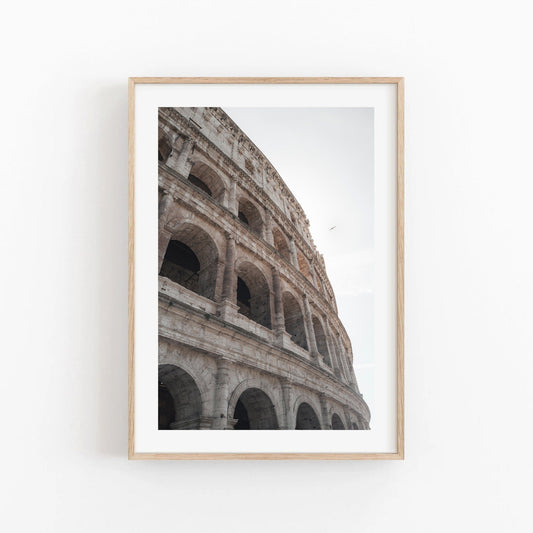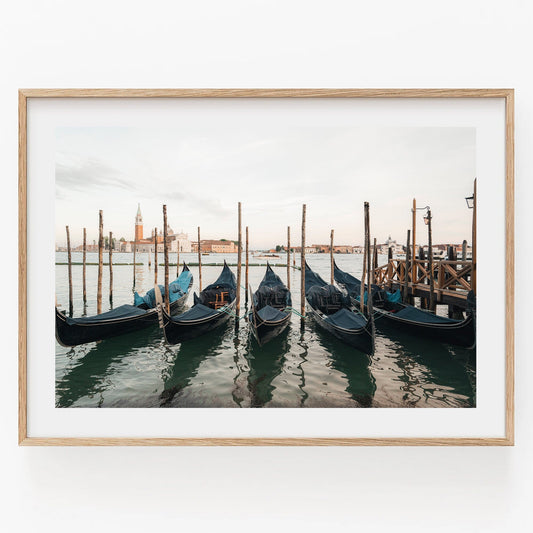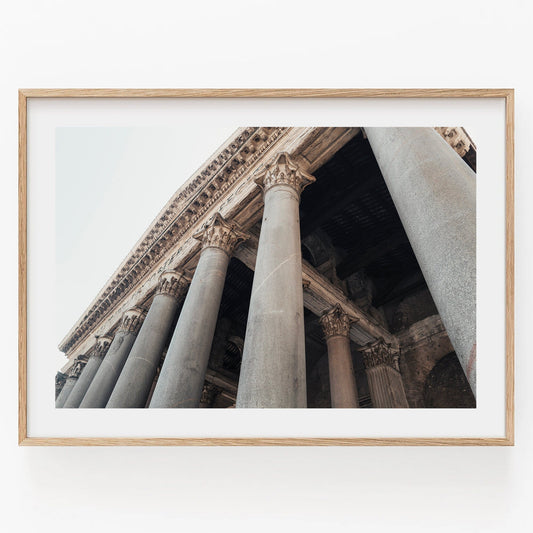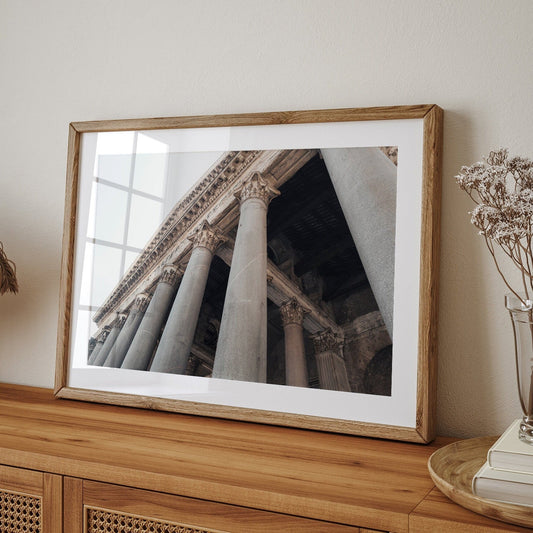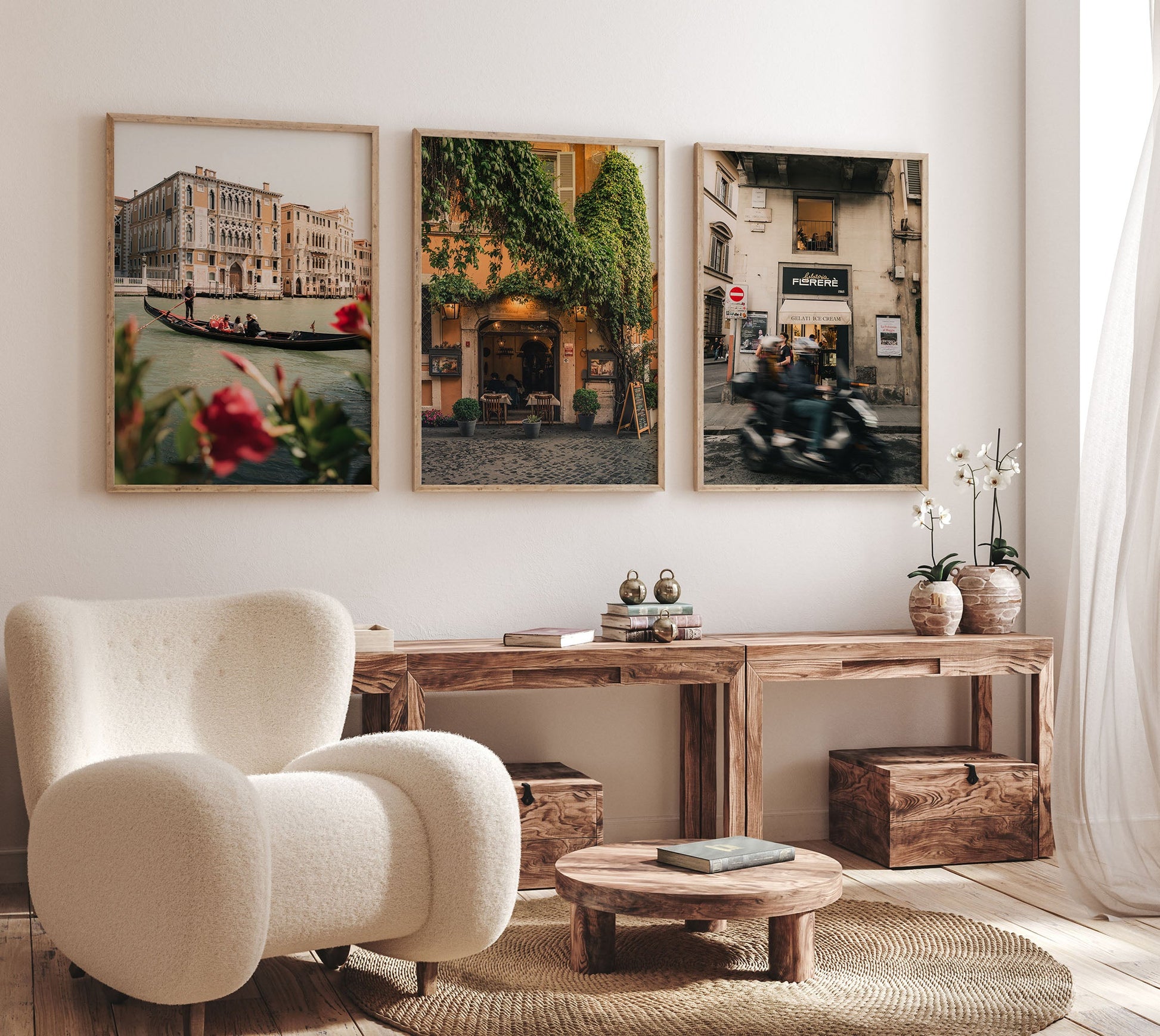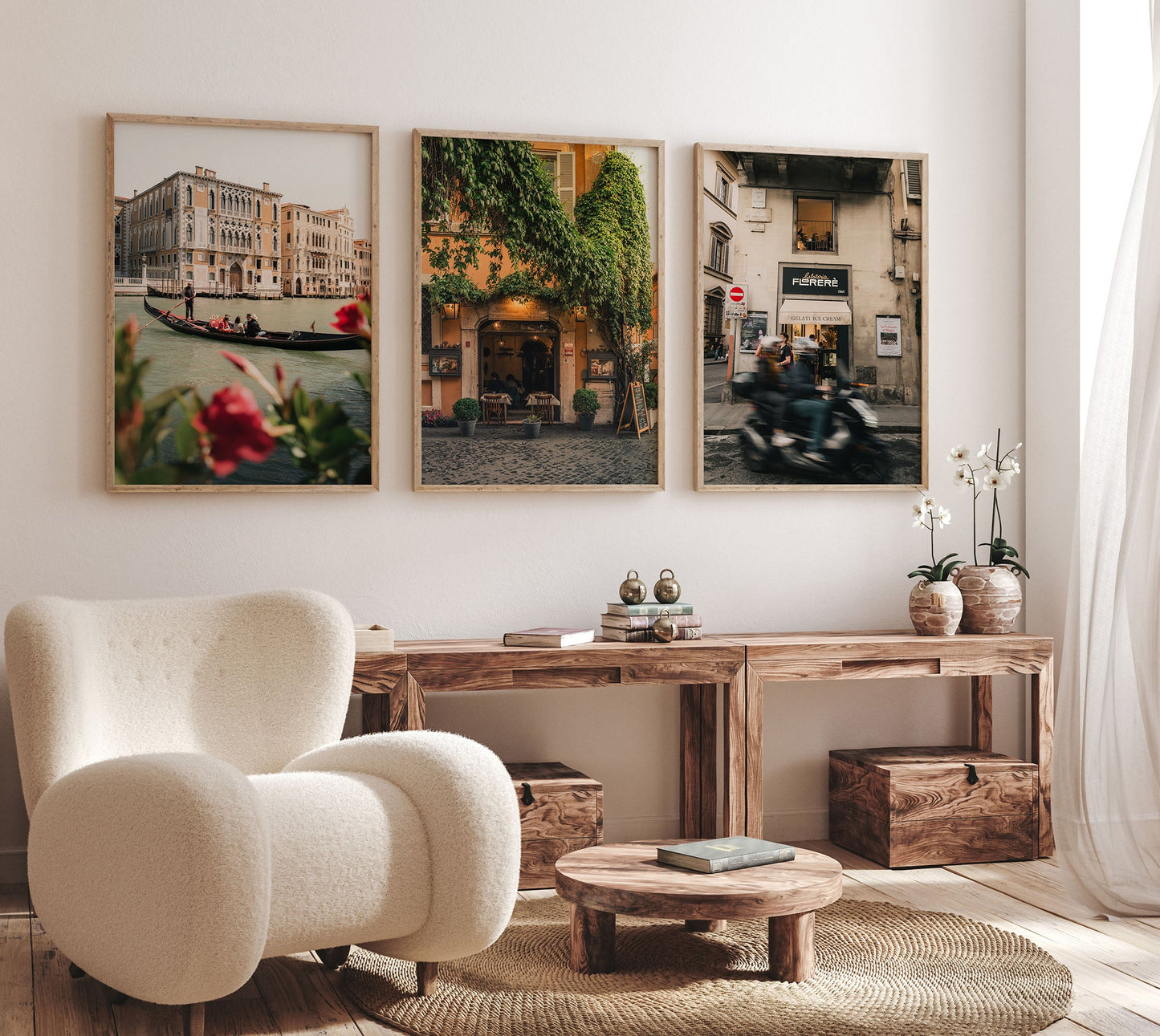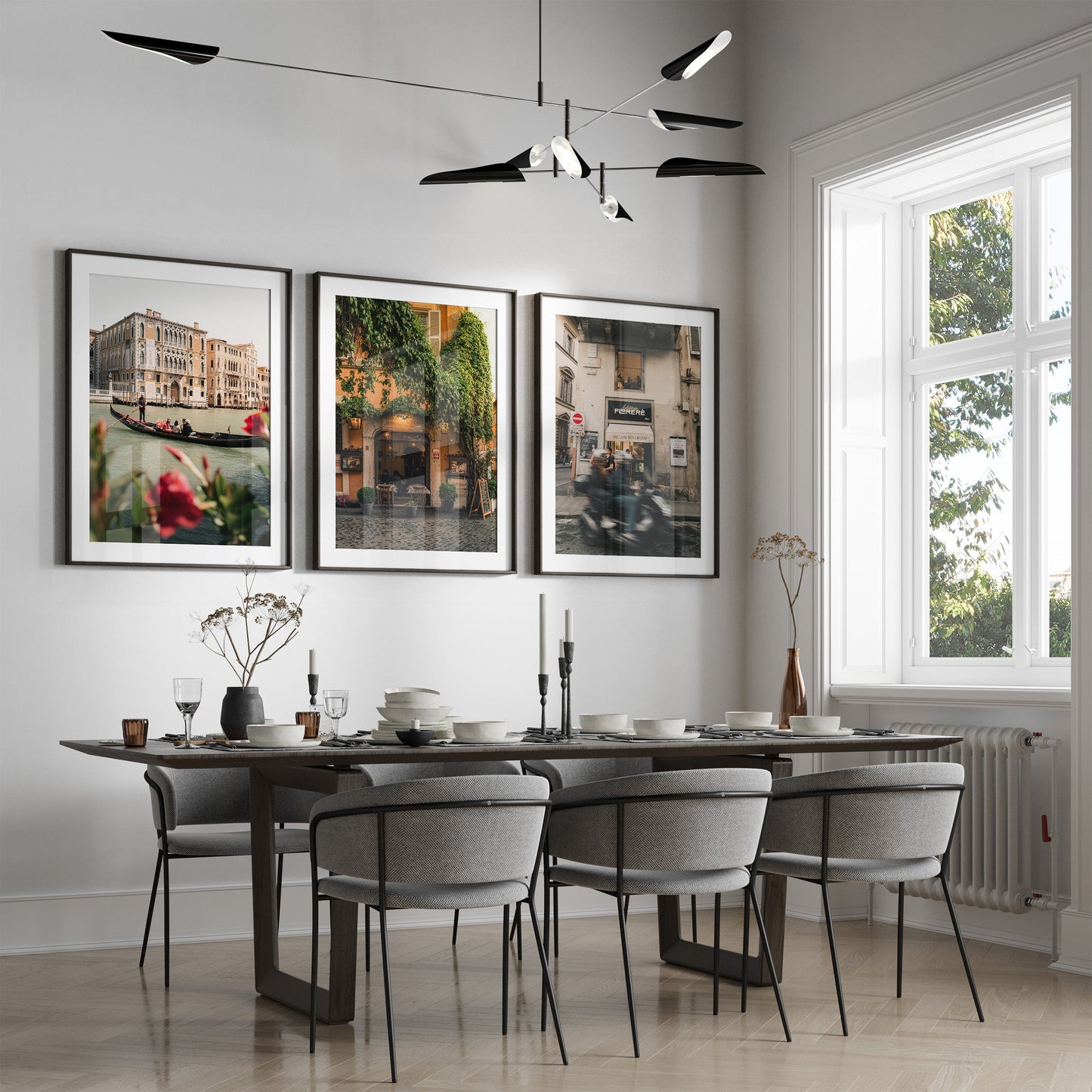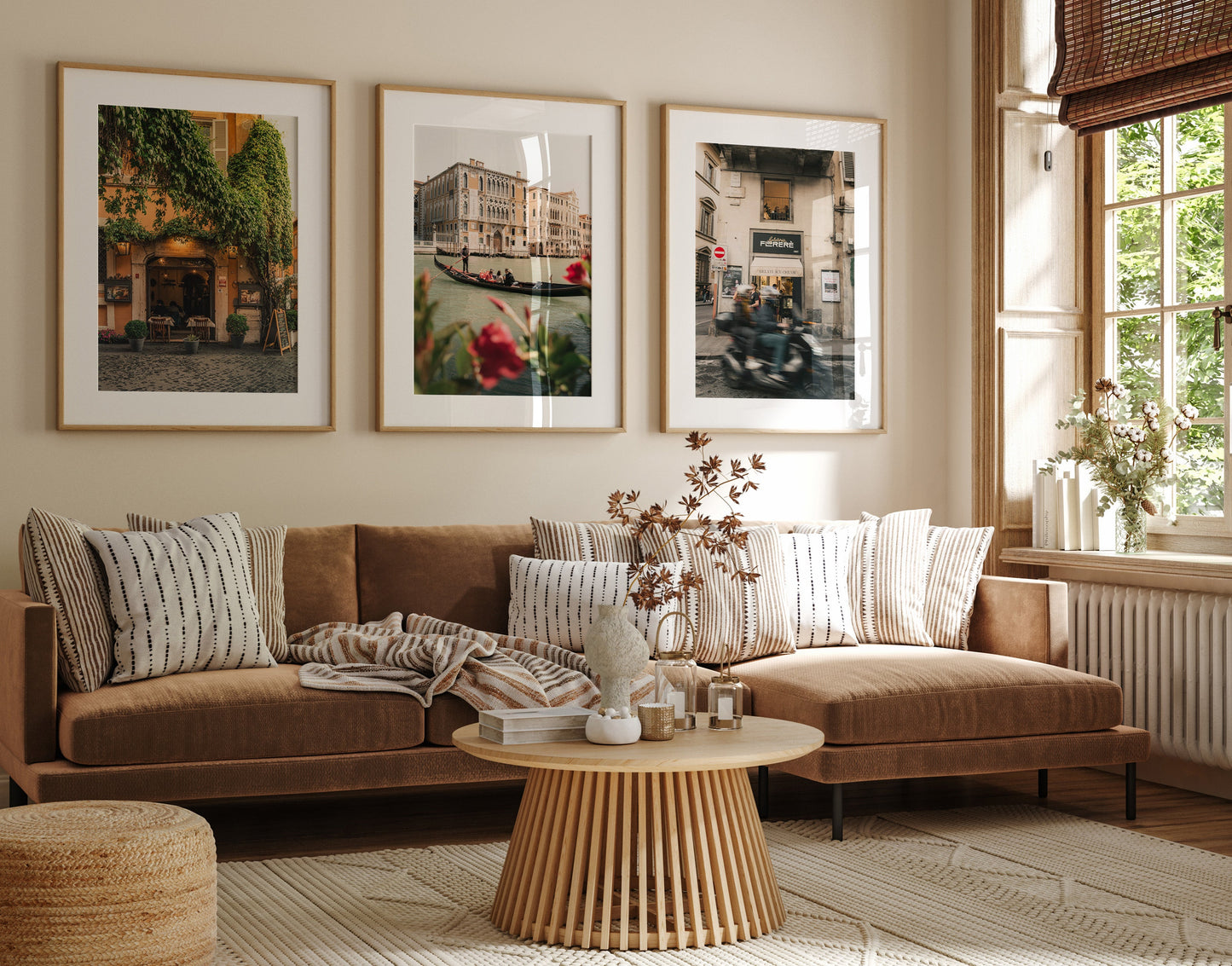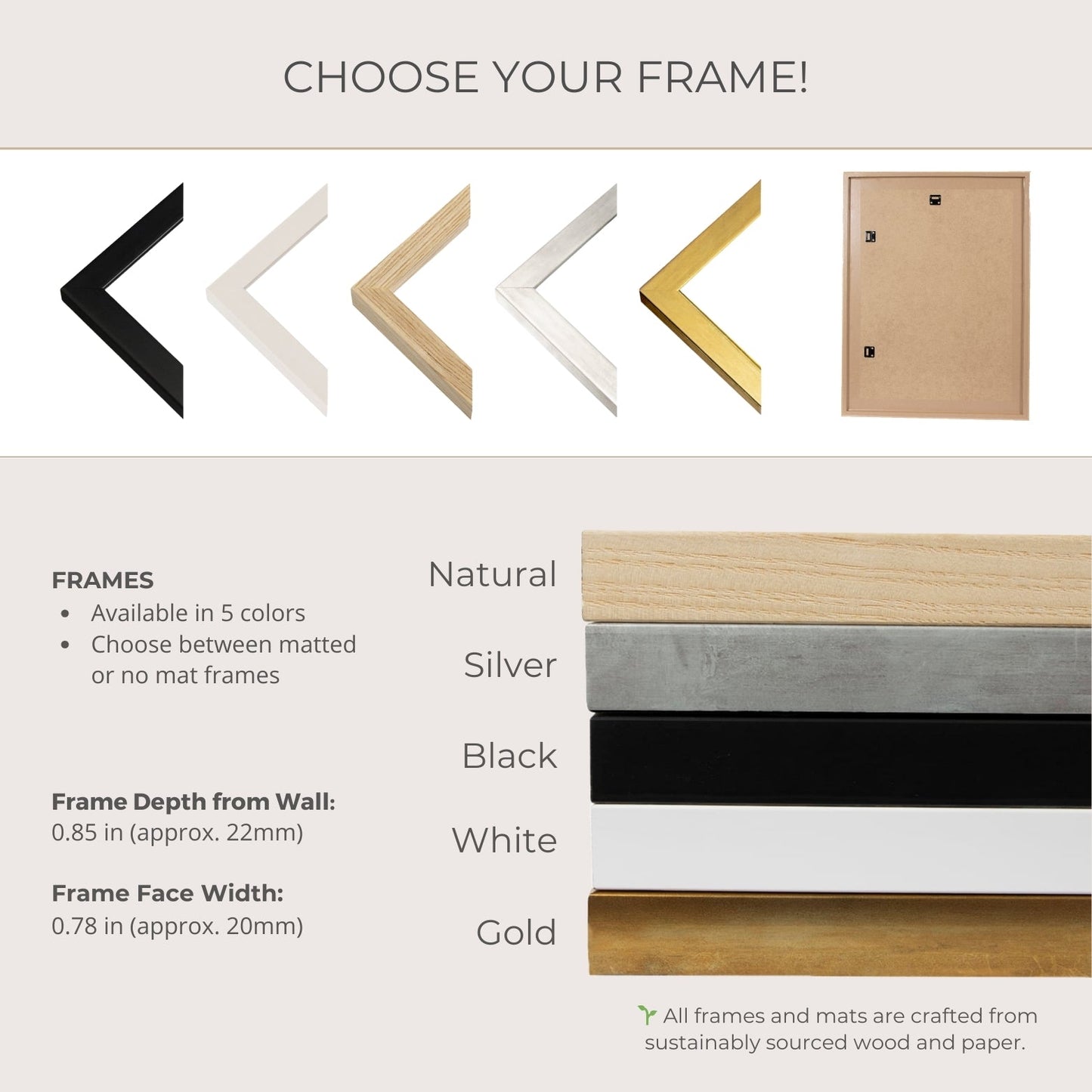Italy is a beloved country among travelers and for good reason. It is a whirlwind of rich history, art, culinary delights, and timeless beauty.
Although this stunning country deserves more than a week to explore, a week will give you enough time for a glimpse into three of its major cities: Rome, Florence, and Venice.
I visited these three cities for my first time in Italy with my brother and his girlfriend. And I’m dying to return for more.
If you only have a week to spare, this post will give you a detailed breakdown on how to make the most of 7 days in Italy.
Table of Contents
- Why Travel in Italy
- Best Month to Travel Italy
- Where to Visit in Italy for First-time Visitors
- How To Travel Between Italian Cities
- How Much Will One Week in Italy Cost
- Italy One Week Itinerary Breakdown
- Rome (3 Days)
- Where To Stay in Rome
- Day 1: Colosseum, Roman Forum, Palatine Hill for Panoramic views
- Day 2: Trastevere and Tiber Island
- Day 3: Trevi Fountain, Pantheon, Spanish Steps, Charming streets of Monti
- Popular Dishes to Try in Rome
- Florence (2 Days)
- Where To Stay In Florence
- Day 1: Climb the Duomo, Uffizi Gallery, Ponte Vecchio
- Day 2: Galleria dell'Accademia, Boboli Gardens, Sunset at Piazzale Michelangelo
- Florence Dishes to Try
- Venice (2 Days)
- What Makes Venice Special
- Where To Stay In Venice
- Day 1: St. Mark's Square (Piazza San Marco), St. Mark's Basilica, Doge’s Palace, Bridge of Sighs, Rialto Bridge
- Day 2: Accademia Bridge, Jewish Ghetto, Gondola Ride, Evening stroll
- Venice Dishes to Try
- Conclusion
Why Travel in Italy
Italy is truly a beautiful and unique country. Aside from the art, architecture, and food, the way of life in Italy is magnetic.
Italians are known for their passion and zest for life, which is reflected in their expressive gestures and warm hospitality. It's a place where every moment is infused with a sense of la dolce vita, meaning “the sweet life”.
Best Month to Travel Italy
Late spring (May and June) and early autumn (September and October) are the best times to visit Italy. During these months, you can enjoy pleasant weather, fewer crowds, and vibrant landscapes.
I visited in May and found the pleasant weather and floral ambience to have the liveliness and colors that I enjoy.
Where to Visit in Italy for First-time Visitors
Italy is a treasure of stunning destinations, each offering its own unique charm. From the breathtaking Amalfi coast to the idyllic Tuscan countryside, Italy is a country that could take over a month to explore.
But for first time visitors, a visit to Rome, Florence, and Venice is a great start, especially if you enjoy exploring cities. These three cities are a hub of culture and will offer first time visitors the best of Italian cuisine, architecture, and art.
How To Travel Between Italian Cities
Traveling between the cities is convenient, thanks to the country's high-speed trains that connect major Italian cities. Two popular train companies are Trenitalia and Italo, taking approximately only 2 hours to get from Rome to Florence, and from Florence to Venice.

How Much Will One Week in Italy Cost
The budget for a week in Italy can vary significantly due to the wide range of luxury activities and accommodations available. But it also has a great deal to offer mid-range and budget travelers.
Here's a breakdown of budget ranges for a week in Italy:
Budget: $700 - $900 USD
- Hostel accommodations or budget hotels
- Affordable meals at local eateries
- Public transportation
Mid-range: $1,200 - $1,800 USD
- Cozy hotels and Airbnbs
- Dining at mid-range restaurants
- Exploring attractions with occasional splurges
Luxury: $3,000 - $5,000 USD
- Luxurious hotels
- Fine dining experiences at Michelin-starred restaurants
- Private tours and exclusive experiences
Italy One Week Itinerary Breakdown
- Rome: 3 Days
- Florence: 2 Days
- Venice: 2 days
Rome (3 Days)
Where To Stay in Rome
We booked a cozy Airbnb in the Campo de’ Fiori neighborhood. It has a window facing a hidden courtyard on Via del Pellegrino, a street known for boutiques and cafes.
This courtyard is called Largo degli Acetari and it’s extremely well hidden. To find it, head to Via del Pellegrino 19 and walk through an arched tunnel with a black gate. There, you will find an Italian paradise of greenery, aged orange buildings, crates, wagons, and cats.
HERE is the exact Airbnb that we stayed at if you want to experience the charm for yourself.
Other neighborhoods in Rome to consider for your stay:
- Monti: Nestled between the Colosseum and Piazza Venezia, Monti is Rome's oldest neighborhood and a hidden gem filled with character and charm. Its narrow streets are lined with artisanal shops, cozy cafes, and trendy boutiques. Staying in Monti allows visitors to discover ancient alleyways while being within walking distance of Rome's most iconic landmarks.
- Trastevere: A unique Roman neighborhood known for its authentic Roman culture and food. Staying in Trastevere provides a perfect balance between immersion in local life and proximity to major attractions, including the Vatican and historic city center.
- Centro Storico (Historic Center): Centro Storico is in the heart of the action as this district is home to iconic attractions such as the Spanish Steps, Trevi Fountain, and Pantheon. It also has picturesque squares and elegant streets lined with historic palaces and chic boutiques.
Day 1: Colosseum, Roman Forum, Palatine Hill for Panoramic views
Spend your first day in Rome exploring the iconic Colosseum and Roman Forum. Then, climb Palatine Hill for panoramic views of Rome's skyline.
Day 2: Trastevere and Tiber Island
Venture across the Tiber River to the charming neighborhood of Trastevere.
Explore its narrow cobblestone streets, vibrant piazzas, and colorful buildings adorned with ivy. And visit Tiber Island, connected to the mainland by picturesque bridges.
Check out my mini guide on how to spend a whole day in Trastevere and Tiber Island HERE.
Day 3: Trevi Fountain, Pantheon, Spanish Steps, Charming streets of Monti
Throw a coin into the Trevi Fountain for good luck, gaze at the Pantheon, and climb the Spanish Steps for views of Rome’s streets.
Then, wander through the charming streets of Monti, a trendy neighborhood known for its boutiques, cafes, and artisan shops.
Popular Dishes to Try in Rome
- Cacio e Pepe: A beloved Roman pasta dish made with Pecorino Romano cheese, black pepper, and spaghetti or tonnarelli pasta. Its creamy texture and bold, peppery flavor make it a quintessential Roman specialty.
- Carbonara: Another classic Roman pasta dish featuring spaghetti or rigatoni pasta tossed with a creamy sauce made from eggs, Pecorino Romano cheese, pancetta (or guanciale), and black pepper. It's rich, indulgent, and incredibly satisfying.
- Supplì: These deep-fried rice balls are filled with tomato sauce, mozzarella cheese, and sometimes ground meat. Crispy on the outside and gooey on the inside, they're a popular street food snack or appetizer in Rome, bursting with flavor and texture. You can visit a shop recommended in my Trastevere guide.
Florence (2 Days)
Where To Stay In Florence
Florence is a walkable city. I recommend staying in the following neighborhoods for first time visitors as they offer a well-rounded glimpse into Florence’s artistry and authenticity.
- Santa Croce: This neighborhood allows you to experience the historic charm with cobblestone streets and iconic landmarks like Basilica di Santa Croce and Piazza Santa Croce.
- Oltrarno: Oltrarno is a great neighborhood to Immerse yourself in artistry and authenticity with artisan workshops, boutiques, and trattorias against the backdrop of Renaissance architecture.
- Santa Maria Novella: This neighborhood is within walking distance of key attractions like the Duomo, Ponte Vecchio, and Piazza della Repubblica. It’s also centrally located and close to the Santa Maria Novella train station.
We stayed at a lovely Airbnb in Santa Maria Novella a few minutes walk from the train station, which was convenient as it was raining heavily when we arrived and departed.
HERE is the link to the exact Airbnb we stayed at. The artwork on the ceiling was breathtaking, making it a memorable welcome to Florence.
Day 1: Climb the Duomo, Uffizi Gallery, Ponte Vecchio
For your first day in Florence, start by visiting the Duomo and the surrounding buildings for stunning city views. The whole experience should take 2-3 hours.
I recommend climbing to the top of the Duomo if you’re up for it! The panoramic view at the top is absolutely stunning with the countryside in the distance. The climb takes 30-45 minutes and there’s space for you to take breaks in between.
Entrance to the Duomo is free but climbing it will require a paid ticket, which you can purchase online or in person. The other buildings around the Duomo will require a ticket:
- Florence Cathedral (Duomo): Entry to the cathedral itself is free, but tickets are required to climb the dome, visit the baptistery, or access the cathedral museum.
- Giotto's Bell Tower (Campanile): This stunning bell tower adjacent to the Duomo offers panoramic views of Florence. Tickets are required for entry.
- Opera del Duomo Museum: This museum houses original artworks from the Duomo complex, including pieces from the cathedral, baptistery, and bell tower. A ticket is needed for entry.
- Crypt of Santa Reparata: Located beneath the Florence Cathedral, this archaeological site showcases the remains of the ancient cathedral upon which the current Duomo was built. A ticket is needed for entry.
For more information about visiting the Duomo and its surrounding buildings, visit Florence Tickets website HERE.
After lunch, visit the Uffizi Gallery to see Renaissance masterpieces by famous artists: Botticelli's "The Birth of Venus" and Leonardo da Vinci's "Annunciation".
Finally, take a leisurely walk across the Ponte Vecchio during golden hour to admire its historic charm and unique shops.
Day 2: Galleria dell'Accademia, Boboli Gardens, Sunset at Piazzale Michelangelo
Start the second day at the renowned Galleria dell'Accademia, home to Michelangelo's David and other Renaissance masterpieces.
Afterwards, visit the scenic Boboli Gardens, featuring lush greenery, sculptures, and panoramic views of Florence. This garden is absolutely gorgeous and embodies the feminine floral ambience of Italy. It was one of my highlights in Florence.
Finally, enjoy the sunset at Piazzale Michelangelo, offering a breathtaking view of Florence's skyline.
Florence Dishes to Try
- Bistecca alla Fiorentina: This iconic Florentine dish consists of a thick-cut T-bone steak, grilled over a wood fire until charred on the outside and rare on the inside.
- Ribollita: A hearty Tuscan soup made with bread, cannellini beans, vegetables (such as kale, cabbage, carrots, and celery), and often leftover minestrone or vegetable soup.
Venice (2 Days)
What Makes Venice Special
Venice is a charming and romantic Italian city, and arguably my favorite during the trip. First, cars are not permitted in the city center, creating a pedestrian-friendly environment where the sounds of footsteps echo through narrow alleyways and the only vehicles you'll encounter are boats gliding gracefully along the canals.
And I absolutely absolutely absolutely love boats. Venice did not disappoint.
Another reason Venice is special is how the island was built. It is entirely man-made by driving wooden piles into the marshy ground to create a stable foundation. As a result, it has a profound effect on how Venetian architecture.
Venetian buildings have a symmetrical architectural design to distribute weight evenly, ensuring stability in a city built on wooden piles and marshy ground. This balanced construction method prevents leaning over time.
Where To Stay In Venice
- San Marco: San Marco is the beating heart of Venice, boasting iconic landmarks like St. Mark's Square and the Doge's Palace. It offers first-time travelers easy access to the city's main attractions. However, it can be more expensive than the other neighborhoods due to its popularity.
- San Croce: San Croce provides a tranquil retreat away from the tourist crowds, offering first-time travelers the opportunity to experience authentic Venetian life amidst quiet squares and traditional houses.
- San Polo: As one of Venice's oldest neighborhoods, San Polo captivates with its historic charm, picturesque canals, and labyrinthine alleyways, perfect for leisurely strolls and exploration. It also has popular attractions such as the Rialto Bridge and Rialto Market.
- Cannaregio: Cannaregio provides an escape from crowds with hidden gems, such as the Jewish Ghetto and Fondaco dei Tedeschi. Known for its authentic Venetian charm and residential feel, Cannaregio gives a glimpse into local life.
I stayed at a boutique hotel in Santa Croce called Ca' Riza and I highly recommend it! It’s great for its value.
Unlike larger chain hotels and Airbnbs, Ca’ Riza holds a cozy and traditional charm. The boutiqueness of it makes it warm and inviting.
The host is a kind older man, and he serves fresh breakfast each morning–for free!
After I checked out, I realized that I accidently left my backpack at the hotel, and he walked after me in the rain to return my backpack. You can sense that he enjoys his vocation, which makes the stay that much more special.
Day 1: St. Mark's Square (Piazza San Marco), St. Mark's Basilica, Doge’s Palace, Bridge of Sighs, Rialto Bridge
Begin your first day in Venice by soaking in the grandeur of St. Mark's Square, where you'll find St. Mark's Basilica and the Doge's Palace. This iconic square has been the political, social, and religious center of the city for over a millennium, serving as a focal point for important events, ceremonies, and celebrations.
Explore the lavish interiors of the basilica and palace, then cross the iconic Bridge of Sighs. This bridge connects the Doge's Palace to the Prigioni Nuove (New Prison). Its name, the Bridge of Sighs, originates from the belief that prisoners would sigh as they crossed the bridge, casting a final glance at the beautiful view of Venice before entering their cells.
Finally, finish your day with a stroll along the historic Rialto Bridge, taking in a stunning view of the Grand Canal during sunset.
Day 2: Accademia Bridge, Jewish Ghetto, Gondola Ride, Evening stroll
Start your second day in Venice with a view of the Grand Canal on the Accademia Bridge.
Then explore the historic Jewish Ghetto, Europe’s first established Jewish quarter. Explore the narrow streets lined with historic synagogues, quaint shops, and traditional eateries, immersing yourself in the cultural tapestry of this fascinating neighborhood.
After lunch, treat yourself to a romantic gondola ride. Traditionally, the gondolier profession is highly cultural as it is passed down through generations within families with apprenticeships to master the craft.
Gondola rides typically cost around $90 to $135 USD (80 to 120 euros) for a 30-minute tour, but prices can vary depending on the route. You can also negotiate the price with your gondolier by customizing your route for a cheaper price. I recommend a route that goes through Venice's smaller canals as they’re more peaceful and quaint.
To end the day, take a leisurely evening stroll along Venice's quiet streets and canals, experiencing the city's timeless charm in the golden light. After the sun sets, Venice comes alive with the sound of lapping water and distant chatter.
Although Venice is a safe city, it’s still important to stay aware of your surroundings while exploring Venice at night, especially if you’re alone.
Venice Dishes to Try
- Sarde in Saor: Marinated sardines, typically fried and then marinated in a sweet and sour sauce made from onions, vinegar, raisins, and pine nuts. It's a flavorful and aromatic Venetian appetizer.
- Risotto al Nero di Seppia: A Venetian specialty featuring Arborio rice cooked in a rich, black squid ink broth. The squid ink gives the risotto its striking black color and imparts a briny, seafood flavor, making it a unique and delicious dish to try in Venice.
- Fritto Misto di Mare: A mixed seafood fry featuring an assortment of freshly caught seafood such as shrimp, calamari, and small fish, coated in seasoned flour and deep-fried until golden and crispy. It's often served with a squeeze of lemon and a side of aioli or marinara sauce.
Conclusion
A one-week journey through Rome, Florence, and Venice offers a taste of Italy's rich history, art, culinary delights, and timeless beauty.
While it may seem short for such a captivating country, it provides ample opportunity to explore some of its most iconic cities and immerse yourself in their unique charms.
From the ancient wonders of Rome to the artistic treasures of Florence and the romantic allure of Venice, each destination offers a distinctively Italian experience that will leave you in awe of its beauty.
If you’re looking to bring the warmth and charm of Italy to your home, check out my photography print collection below.
























